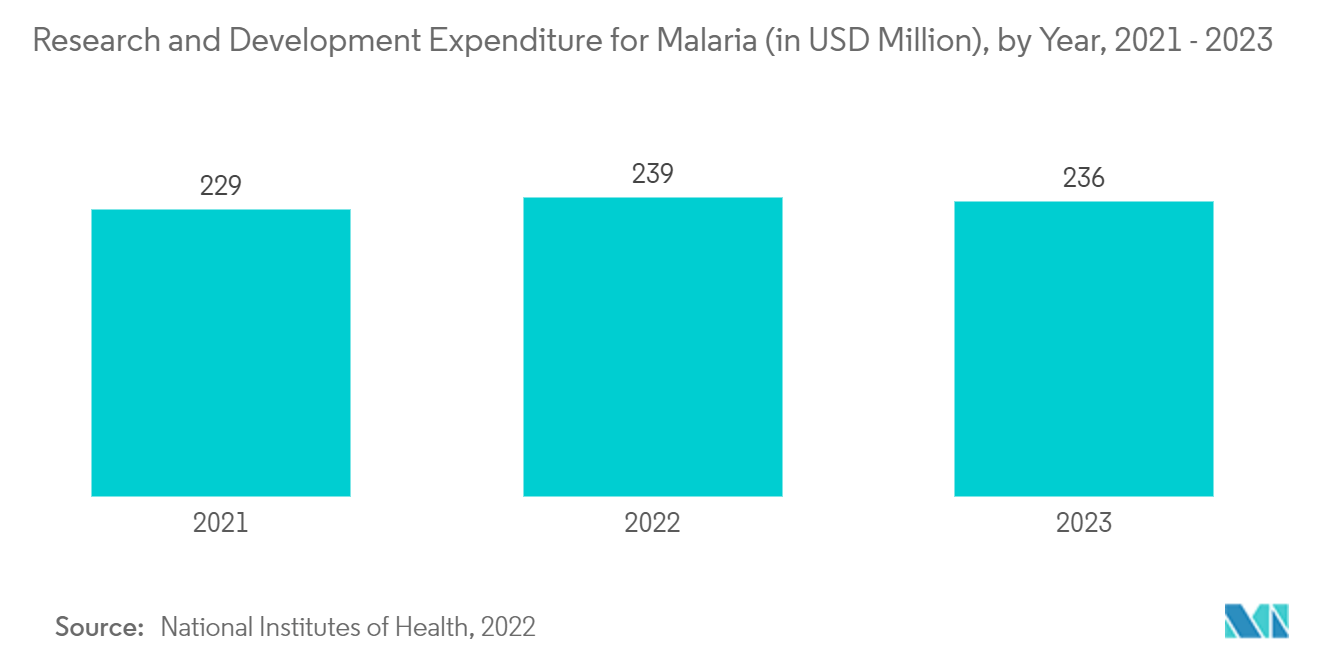Market Trends of Global Antiparasitic Drugs Industry
This section covers the major market trends shaping the Anti-Parasitic Drugs Market according to our research experts:
Antiprotozoals Segment is Expected to Witness Growth Over the Forecast Period
Antiprotozoals are anticipated to witness the fastest growth during the forecast period owing to the increasing prevalence of malaria, increasing emphasis of companies on developing these drugs
Protozoan diseases are becoming more common worldwide, and a lack of effective medicine aggravates this due to drug resistance and the toxicity of present antiprotozoal medications. These parasite infections cause mortality and morbidity worldwide, affecting around 500 million people.
Antiprotozoals are expected to hold a significant market share in the antiparasitic drugs market owing to the increasing prevalence of malaria in developing and under-developed countries such as India, Africa, and other Southeast Asian countries. As per the "World Malaria Report" published by World Health Organization (WHO) in December 2021, 29 of the 85 malaria-endemic countries accounted for 96% of all malaria cases in 2020. India contributed approximately 1.7% of malaria cases. According to the same source, there were an estimated 241 million malaria cases in 2020, compared to 227 million cases in 2019. Such an increase in disease infections will likely drive the demand for antiprotozoal drugs over the coming years.
Furthermore, the increasing emphasis of companies on developing these drugs is expected to drive the growth of the antiprotozoal drugs segment over the forecast period. For instance, in January 2020, Shin Poong and Medicines for Malarial Venture developed an antimalarial drug, Pyramax, to reduce the increasing number of malarial-induced ailments in Nigeria. Moreover, artemisinin drugs with antiprotozoal activity are considered the first line of treatment in combination with other antimalarial drugs to reduce the resistance developed by the malaria parasite Plasmodium falciparum against artemisinin when administered alone. For instance, artemether-lumefantrine (Coartem) and artesunate-mefloquine are recommended as artemisinin-based combination therapies. Moreover, according to the World Health Organization data published in March 2020, artemisinin is effective against all Plasmodium parasitic protozoa that cause malaria. The drug effectively treats infections caused by chloroquine-resistant parasites and infections caused by multidrug-resistant P. falciparum, the deadliest malaria protozoans.
Thus, these factors are anticipated to contribute to the segment's growth during the forecast period.

North America is Expected to Have the Significant Market Share Over the Forecast Period
North America is expected to hold a major market share in the antiparasitic drug market due to the increasing prevalence of malaria infection, growing awareness, an increasing number of strategic initiatives undertaken by prominent players, the surge in research and development activities, and increasing migration to North America through the Central American isthmus. For instance, according to the World Health Organization, in 2021, more than 723,000 cases of malaria were reported in America. Furthermore, as per the data published by the Sepsis Organization, in May 2021, toxoplasmosis and Giardia infections are the two most common parasitic infections in North America.
Furthermore, in June 2021, researchers in Canada warned that a new cancer-like parasite responsible for causing alveolar echinococcosis (AE) is anticipated to emerge in North America. Alveolar echinococcosis (AE) is a rare parasitic condition caused by the tapeworm Echinococcus multilocularis infecting the lungs. These worms can infect a variety of mammals. Most people become infected by ingesting microscopic eggs from contaminated food or handling infected animals. Such an increase in the prevalence of parasitic infections is likely to boost the market's growth in the North American region.
Similarly, an article titled "Malaria in the USA: How Vulnerable Are We to Future Outbreaks?" published in January 2021 in PubMed Central, stated that despite the absence of recent autochthonous cases in the United States, numerous factors indicate that local malaria outbreaks will remain a public health threat in the United States, including large numbers of international visitors from endemic areas, multiple Anopheles species capable of transferring the parasite, and inadequate vector-borne disease preparedness.
Thus, these factors are likely to drive the growth of the antiparasitic drugs market in the North American region.


